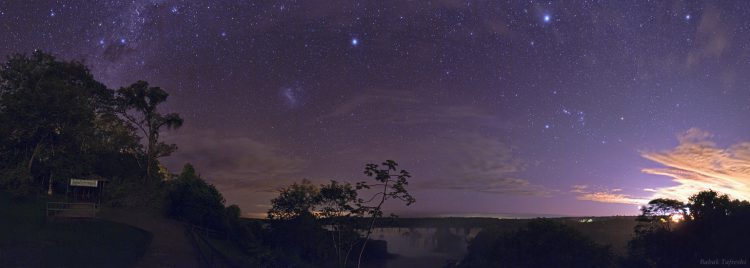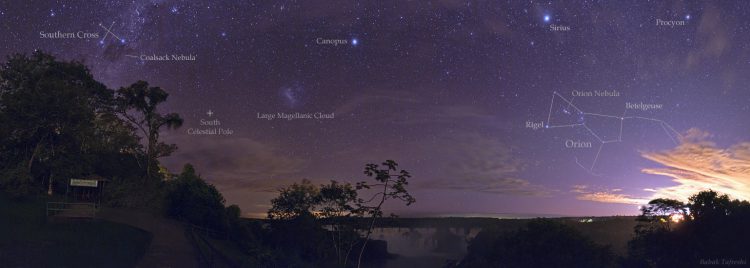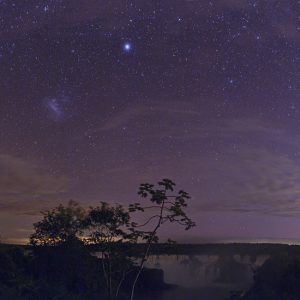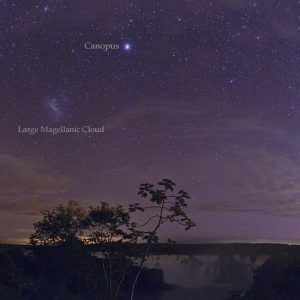Iguacu Falls at Night
Description
Starry sky above the spectacular Iguaçu Falls and national park at the border of Brazil and Argentina. The World Heritage Iguacu includes 275 falls spreading across 3 kilometers of Iguacu river and is widely considered as one of the new Seven Wonders of the world. Looking skyward from the left the Southern Cross and Coalsack dark nebula are visible. Use the two pointer stars of the cross to locate the South Celestial Pole, where there is no significant pole star like Polaris in the northern hemisphere. Not far from the pole is our neighboring galaxy the Large Magellanic Cloud (LMC), the furthest object visible in this view at 160,000 light years away. The picture we are seeing of the galaxy belong to the time when there was no civilization on our planet. In the upper center brilliant Canopus, second brightest star in the night, is located. Pan more to right to see Sirius, the brightest star of our night-time and constellation Orion, setting through remaining glow of the evening twilight and nearby city lights. Don’t miss planet Venus below Orion and right at the horizon. Move the slider on the image to see all the labels.
As noted by the photographer “I was located on the northern side of Iguaçu and a nice portion of the falls were visible. There were challenges to make TWAN photos here, besides the long travel. The area is very wet at this high water season and working at night with long exposures close to the falls damages the camera easily, and it’s often foggy and cloudy. Staying in front of the roaring giant falls at night with Southern Milky Way and the Magellanic Clouds in front me and dense rainforest in my back was an experience to remember. After three night of overcast sky, the clear sky came but didn’t last more than few hours but it was enough for a successful night adventure in this paradise.”




comments (0)